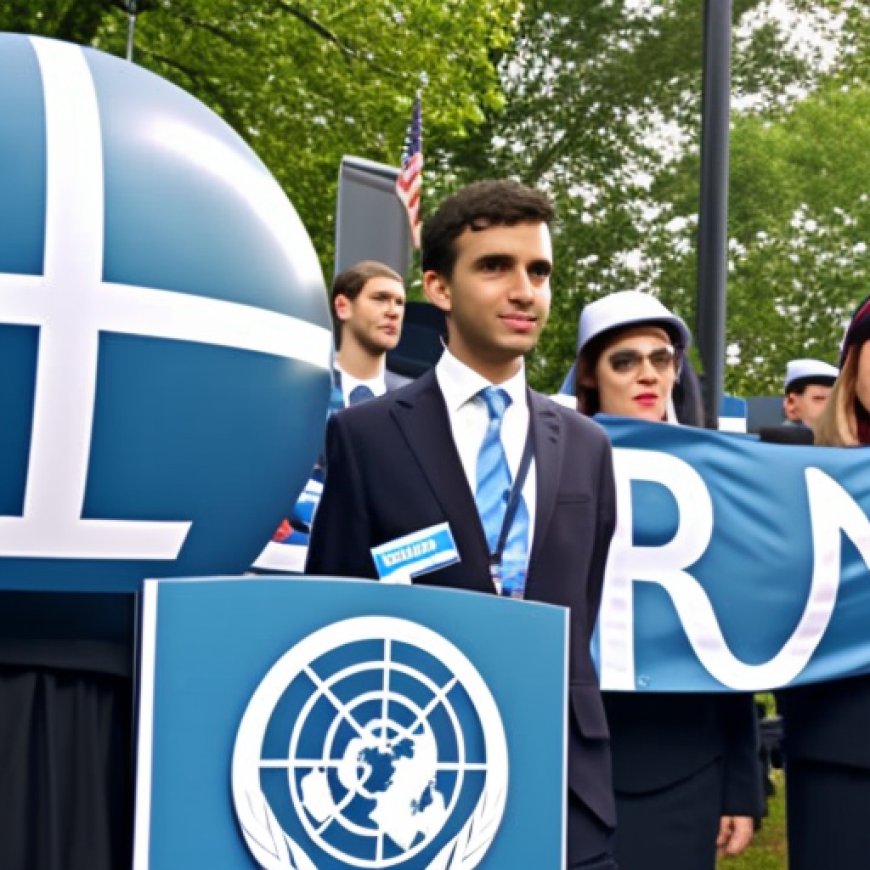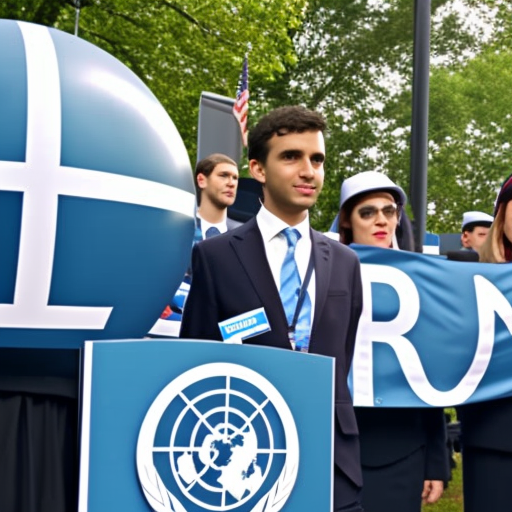URI junior advocates for clean energy alternatives at U.N. climate change conference
URI junior advocates for clean energy alternatives at U.N. climate change conference University of Rhode Island


Kiersten Sundell Advocates for Clean Energy at the United Nations Climate Change Conference
KINGSTON, R.I. – Dec. 19, 2023 – Kiersten Sundell, a University of Rhode Island junior from Thomaston, Connecticut, was inspired by environmental activist Greta Thunberg to raise awareness about climate change and become an activist. Sundell, like Thunberg, wanted to inform everyday people about global warming and alternative energy sources. She got the opportunity to do so at the United Nations Climate Change Conference in Dubai, United Arab Emirates, where she advocated for clean energy.
Attending the Conference
Sundell, a triple major in environmental science and management, political science, and wildlife and conservation biology at URI, made the trip to Dubai as part of Generation Atomic, a grassroots group that advocates for nuclear power and other clean energy alternatives. At the conference, she met dignitaries from numerous countries, members of the U.S. House of Representatives, Kathryn Huff (assistant secretary of the U.S. Office of Nuclear Energy), and Miss America Grace Stanke.
Global Agreement on Clean Energy
The COP28 conference resulted in a global agreement calling for a transition away from fossil fuels and a tripling of renewable energy production to combat global warming. Sundell highlighted two significant outcomes from the conference: 25 countries agreed to triple global nuclear energy capacity by 2050, and a similar agreement was made regarding renewables. She emphasized the importance of nuclear energy as a zero-carbon source that requires less land than renewable resources.
Overcoming Challenges
Sundell’s attendance at the conference faced uncertainties due to a lightning strike incident and the process of obtaining U.N. credentials, paying for travel expenses, and renewing her passport. However, she successfully overcame these challenges.
Advocacy for Clean Energy
As a part-time communications director for Generation Atomic, Sundell provided information on nuclear energy at the conference and produced communications on nuclear power with industry leaders and Miss America Grace Stanke. She emphasized the need for better communication in the clean energy industry and aimed to inform people about clean energy and the U.N. negotiation rooms.
Impact of Advocacy Work
Sundell’s internship with Generation Atomic and her involvement in energy and environmental organizations have enhanced her education at URI. She advocates for both nuclear energy and renewable sources such as solar, hydro, and wind. Sundell believes that humans are responsible for climate change due to their industries and overconsumption of resources. Her advocacy work has provided her with connections and skills for the future.
Networking Opportunities for Undergraduates
Sundell encourages other undergraduates to seize networking opportunities, emphasizing that being the youngest person in the room can be intimidating but also advantageous. She believes that when people notice a young person’s presence, they are more likely to listen to their ideas and opinions.
SDGs, Targets, and Indicators
-
SDG 7: Affordable and Clean Energy
- Target 7.2: By 2030, increase substantially the share of renewable energy in the global energy mix.
- Indicator 7.2.1: Renewable energy share in the total final energy consumption.
-
SDG 13: Climate Action
- Target 13.2: Integrate climate change measures into national policies, strategies, and planning.
- Indicator 13.2.1: Number of countries that have integrated mitigation, adaptation, impact reduction, and early warning into primary, secondary, and tertiary curricula.
- Indicator 13.2.2: Number of countries that have communicated the strengthening of institutional, systemic, and individual capacity-building to implement adaptation, mitigation, and technology transfer.
Analysis
The article discusses Kiersten Sundell’s participation in the United Nations Climate Change Conference in Dubai, where she advocated for clean energy alternatives. Based on the content of the article, the following SDGs, targets, and indicators can be identified:
SDG 7: Affordable and Clean Energy
The article highlights Sundell’s advocacy for nuclear power and other clean energy alternatives. This aligns with SDG 7, which aims to ensure access to affordable, reliable, sustainable, and modern energy for all.
- Target 7.2: By 2030, increase substantially the share of renewable energy in the global energy mix.
- Indicator 7.2.1: Renewable energy share in the total final energy consumption.
The article mentions that at the conference, agreements were made to triple global nuclear energy capacity by 2050 and increase production of renewable energy. These targets align with Target 7.2, which aims to increase the share of renewable energy in the global energy mix.
SDG 13: Climate Action
The article emphasizes Sundell’s interest in raising awareness about climate change and her advocacy work for clean and renewable energy alternatives. This aligns with SDG 13, which focuses on taking urgent action to combat climate change and its impacts.
- Target 13.2: Integrate climate change measures into national policies, strategies, and planning.
- Indicator 13.2.1: Number of countries that have integrated mitigation, adaptation, impact reduction, and early warning into primary, secondary, and tertiary curricula.
- Indicator 13.2.2: Number of countries that have communicated the strengthening of institutional, systemic, and individual capacity-building to implement adaptation, mitigation, and technology transfer.
The article mentions that at the conference, negotiators reached a global agreement calling for a transition away from fossil fuels and a focus on renewable energy. These actions align with Target 13.2, which aims to integrate climate change measures into national policies, strategies, and planning. The indicators mentioned in the article are not explicitly stated but can be implied based on the focus on integrating mitigation, adaptation, impact reduction, and technology transfer into curricula and strengthening institutional capacity-building.
Table: SDGs, Targets, and Indicators
| SDGs | Targets | Indicators |
|---|---|---|
| SDG 7: Affordable and Clean Energy | Target 7.2: By 2030, increase substantially the share of renewable energy in the global energy mix. | Indicator 7.2.1: Renewable energy share in the total final energy consumption. |
| SDG 13: Climate Action | Target 13.2: Integrate climate change measures into national policies, strategies, and planning. |
|
Behold! This splendid article springs forth from the wellspring of knowledge, shaped by a wondrous proprietary AI technology that delved into a vast ocean of data, illuminating the path towards the Sustainable Development Goals. Remember that all rights are reserved by SDG Investors LLC, empowering us to champion progress together.
Source: uri.edu

Join us, as fellow seekers of change, on a transformative journey at https://sdgtalks.ai/welcome, where you can become a member and actively contribute to shaping a brighter future.







